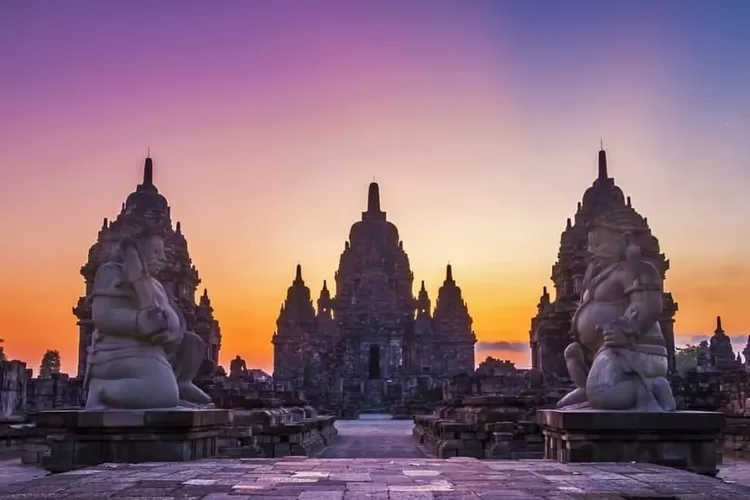Sojiwan Temple Tourism: Perhaps not many people have heard of it, especially when asked where it is located. Indeed, Sojiwan Temple is not as well-known as Prambanan Temple, let alone Borobudur Temple. It's actually not far from Prambanan Temple, taking perhaps half an hour on foot. Recently restored in 2011, this temple is relatively new compared to the other temples. What's most striking about this temple is its similar shape to Prambanan: tall with a pyramid-like structure on top, but the upper part of the temple consists of stupas similar to those at Borobudur. It could be said that this temple is like a "marriage" between Prambanan and Borobudur. This temple is situated within a fairly extensive complex with beautiful, well-maintained gardens. It turns out that this complex was only inaugurated after being restored in December 2011 by the Minister of Education and Culture, Mohammad Nuh. Initially, this temple was only a half-finished structure that looked like a ...
Sewu Temple is a Buddhist temple built in the 8th century which is located close to Prambanan Temple, about 800 meters to the north of Prambanan Temple. Sewu Temple has another name, Manjusrighra Temple. At the entrance of the temple there are a pair of Dwarapala statues. The giant guardian statue measures about 2.3 meters high. The main temple has a polygon plan with 20 angles shaped like a cross with a diameter of 29 meters and a height of up to 30 meters.
Sewu Temple is one of the most recommended historical buildings to visit. Not only for sightseeing, but also to learn about the history of the ancestors' civilization in the archipelago. From the shape and model, the temples in the Sewu Temple complex are very similar to similar buildings found in countries in the region formerly known as Indochina, which in fact was the center of the spread of Buddhism. For example, in Myanmar and Cambodia. "There is a dome shape at the top," he said.
Sewu Temple has 1 main temple, 240 ancillary temples, 4 pairs of appendage temples, and others. The condition of some parts of the ancillary temples is no longer intact. However, it is still interesting to explore. In addition, Hari said, if examined again carefully, on the walls of the main temple there are no reliefs that tell stories or certain stories. Instead, it is just a plain form without any sculptures. This form is typical of classical temple architecture. Meanwhile, the ancillary temples have vine and plant motifs.
The strength of Sewu Temple lies in its main courtyard which is made of rocks. This is a sign that in the past the area was only allowed to be entered by certain groups. Unlike other temples whose courtyards are usually made of soil. The row of temples is a sign that in ancient times Klaten was a Buddhist City as well as evidence that the district was the center of civilization.
Sewu Temple is thought to have been built in the 8th century on the orders of Mataram Kingdom ruler Rakai Panangkaran. Like other temples, the building became a place of worship and religious rituals for the Buddhist community. Both in the time of its greatness and until now.
For example, in Sewu Temple. In the main temple, there is a main room in the center that was once believed to contain a bronze statue of Bodhisattva Manjusri or Buddha. Sewu Temple is characterized by a dome at the top. Similar to other buildings in countries that became the center of the spread of Buddhism.
However, when it was discovered by Dutch experts in 1804, it was already empty. Apart from being a testament to the high level of civilization, the establishment of Sewu Temple is also always associated with a famous legend, the story between Roro Jonggrang and Bandung Bondowoso.
The short story is that Bandung Bondowoso, who had just invaded the Prambanan Kingdom, wanted to propose to Roro Jonggrang. However, Roro Jonggrang asked for one condition: Bandung Bondowoso must build a thousand temples in one night. The temple must be completed before sunrise.
The condition was agreed upon. Bandung Bondowoso, with the help of jinn reinforcements, almost succeeded in completing the thousand temples. However, when there was only one temple left, Roro Jonggrang woke the chickens to crow as if the sun was about to rise. No doubt, the jinns who were helping Bandung Bondowoso left immediately. Knowing this, Bandung Bondowoso cursed Roro Jonggrang to become a statue. However, when referring to the inscriptions found, the original name of Sewu Temple is Prasada Vajrasana Manjusrigrha.




Comments